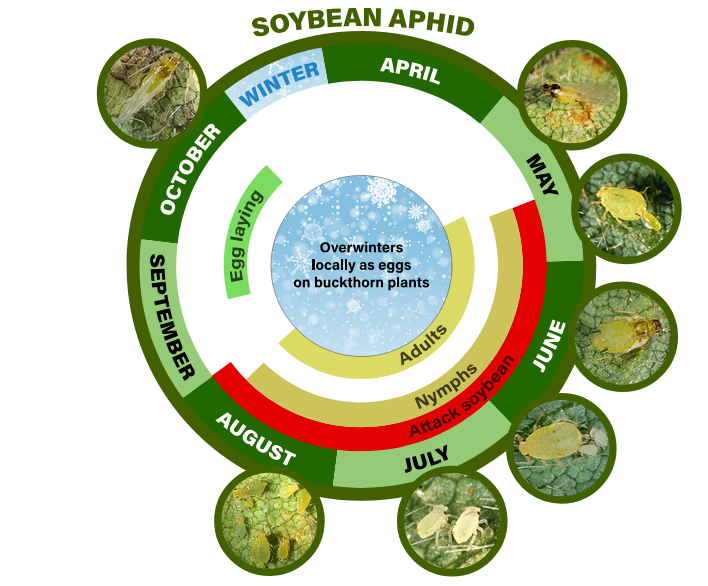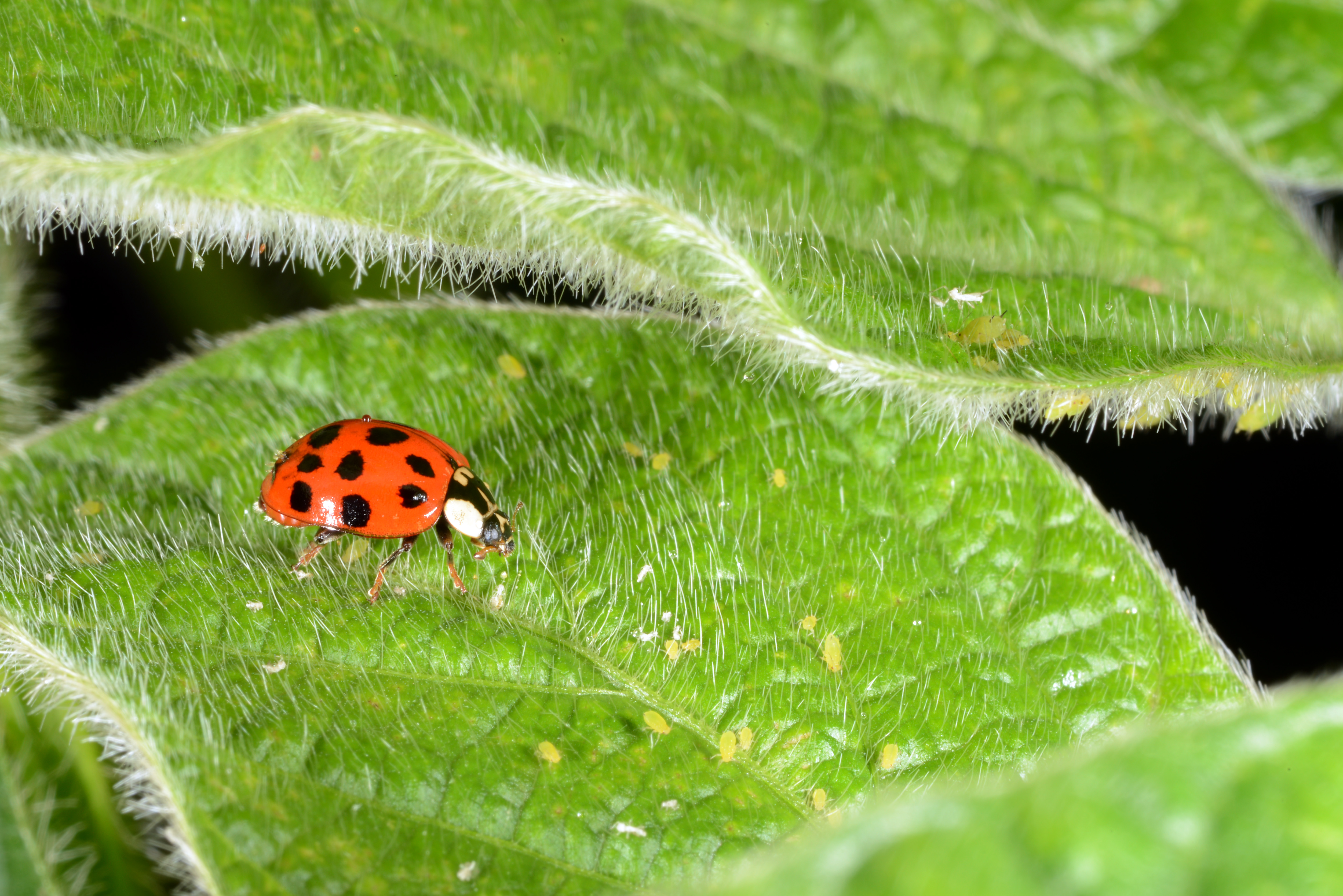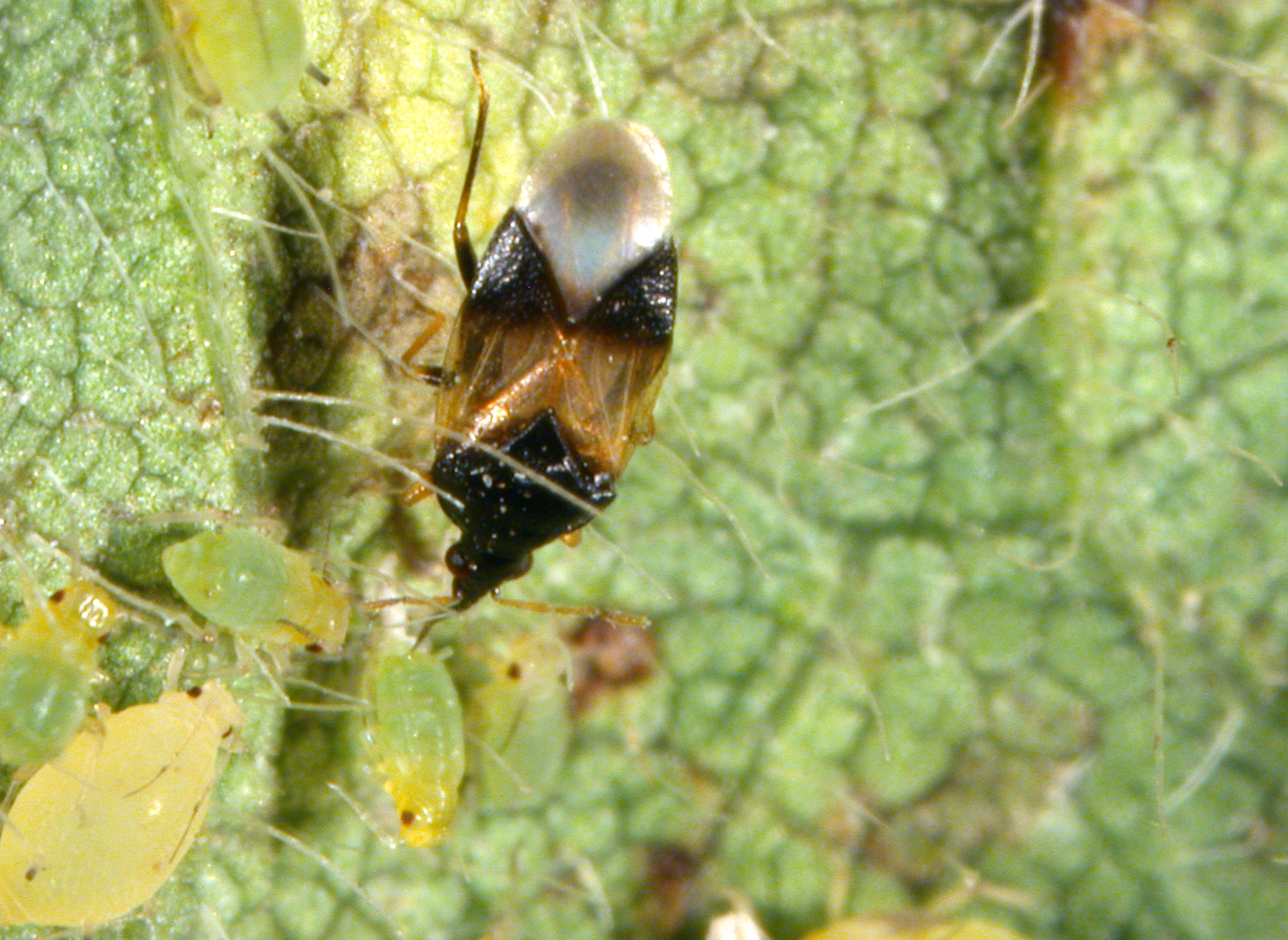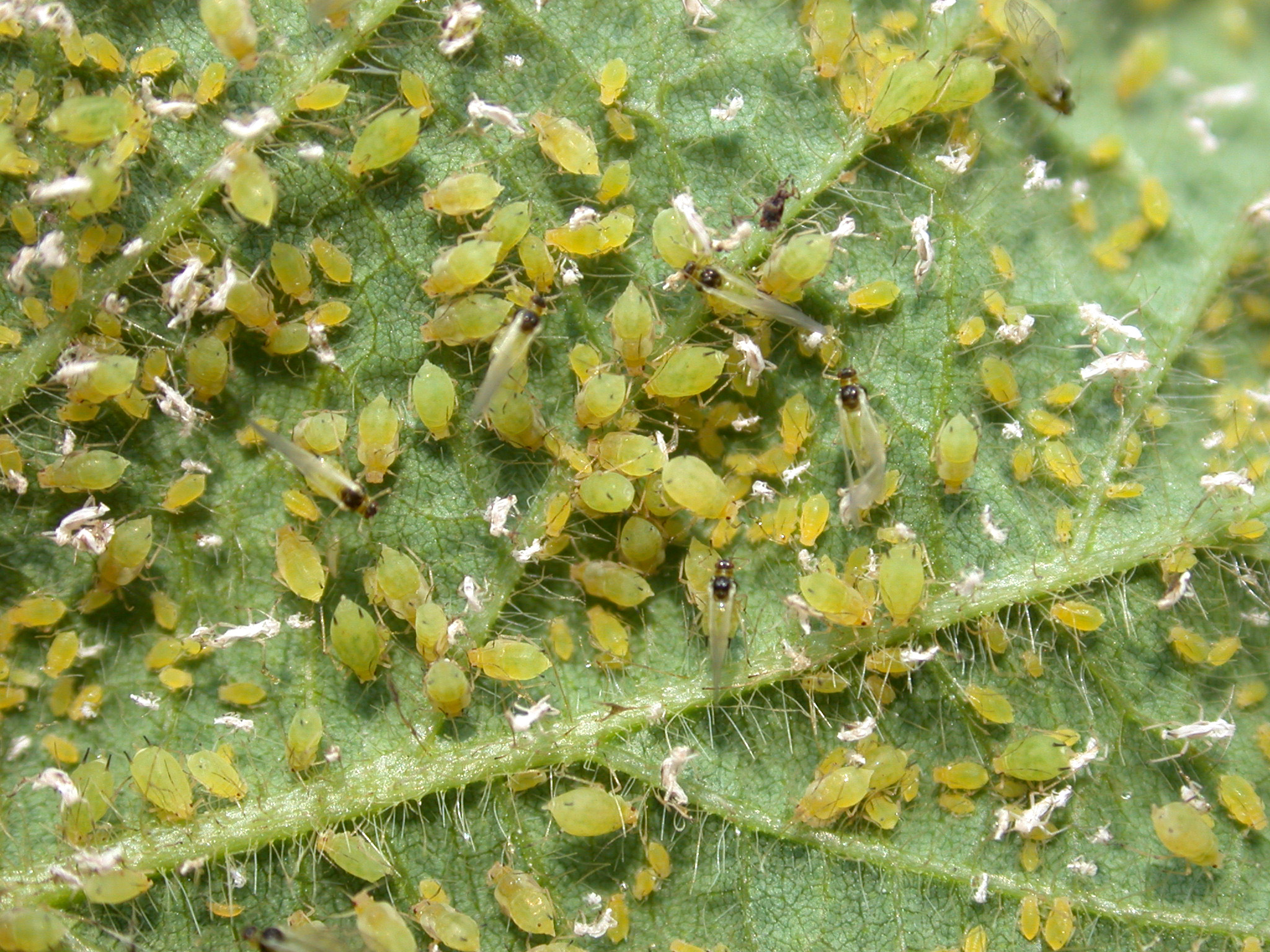Soybean Aphids (Soybean)
Aphis glycines Matsumura
Search the Pest & Crop Newsletter

The ability to see these full-sized life-cycle images is currently disabled to resolve an issue.
Related Video Resources:
Appearance and Life History
The soybean aphid, a native of Asia, has been in the Midwest since 2000 and rapidly became the most serious pest of soybeans in much of Indiana, although since 2010 economically significant infestations have been infrequent.
These aphids are small (less than 1/16″ in length), yellow-bodied insects with distinct black cornicles, and may be either winged or wingless. They are typically slow-moving and most often found on the underside of the newest growth on a soybean plant.
As with many aphids, the soybean aphid has a complicated life cycle, that requires the presence of its overwintering host, Rhamnus cathartica, or buckthorn, a low-profile tree that has higher densities in northern states. Female soybean aphids are able to reproduce live, female offspring (clones) parthenogenically during the summer months.
Damage
The soybean aphid feeds using sucking, needle-like mouthparts to extract plant juices. If aphids are present in large numbers, this feeding may cause a reduction in plant vigor and growth rates, as well as leaf puckering, reduced pod/seed counts, and ultimately reduced yield. Aphid damage is exacerbated by other stressors on the plant (eg. drought) and stressed plants are, in turn, more favorable hosts for aphids, resulting in increased reproductive rates. Aphid honeydew, produced as a waste product during feeding, promotes the development of gray, sooty mold on leaf surfaces, reducing photosynthetic capacity of plants.
Sampling Method
- Sampling for soybean aphid should begin once aphids are first noted in soybeans during the spring. Because movement to soybeans is often sporadic and difficult to predict, we offer season-long updates on soybean aphid emergence numbers at Purdue’s weekly Pest&Crop newsletter, available for free download. The most serious damage to soybean plants can occur during the reproductive growth stages, and aphid populations should be monitored most intensively during this time.
- Sampling:
- Whole-plant counts of affected plants with a threshold of 250 aphids/plant.
- Count 20-30 plants/field; sample the entire field.
- Focus your counts upon the undersides of leaves initially, though aphids will spread throughout the canopy when populations grow.
- Soybean aphids colonizing the stem of the plant (an inferior-quality food source when compared with the leaf) are an indicator of populations in excess of 400 aphids/plant (i.e. over threshold).
- There are several commonly found, beneficial organisms that act to regulate soybean aphid populations to varying degrees. These include Asian ladybird beetles and minute pirate bugs, and their presence should be noted when scouting a soybean field as well.

Photo by J. Obermeyer

Photo by J. Obermeyer
Management Guidelines
Soybean Insect Control Recommendations: E-series 77-W (PDF)
- There are three key variables to consider when making treatment decisions for soybean aphid:
- # of aphids/plant
- soybean growth stage
- soybean stress level

- For example, aphids over threshold from R1-R4 have greater potential yield impact than aphid outbreaks at the R5 or R6 stage. Similarly, drought-stressed plants will show greater yield losses than unstressed plants. Weigh all of these variables (and not just the # of aphids/plant) when making a treatment decision. Bear in mind also that chemical insecticides will negatively impact populations of natural enemies present in the soybean field.


Photo by J. Obermeyer
Look for ants on soybean stems and leaves. The presence of ants on soybean plants is often an indicator of soybean aphid presence on the plant. Ants are attracted by the sweet honeydew that the aphids produce while feeding and “harvest” this liquid directly from the aphids.


